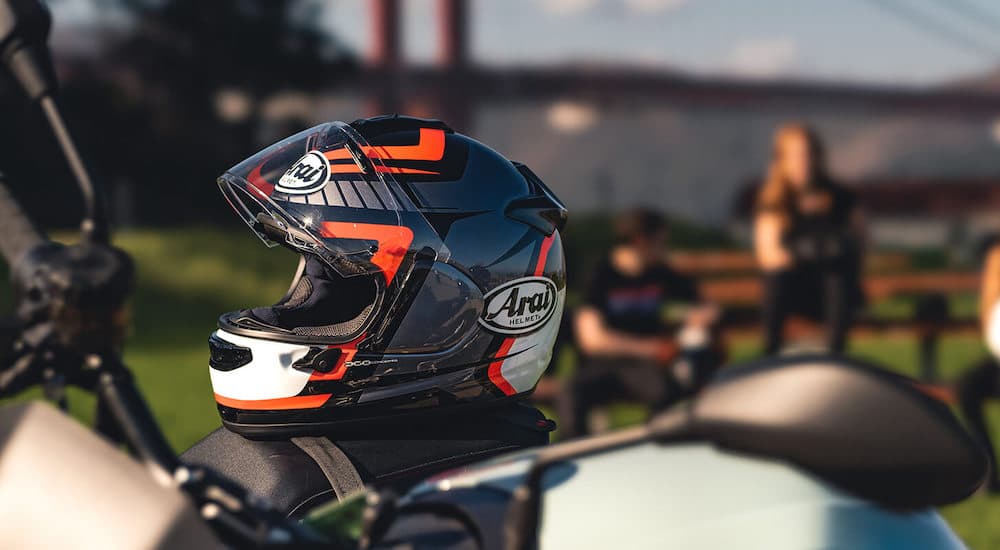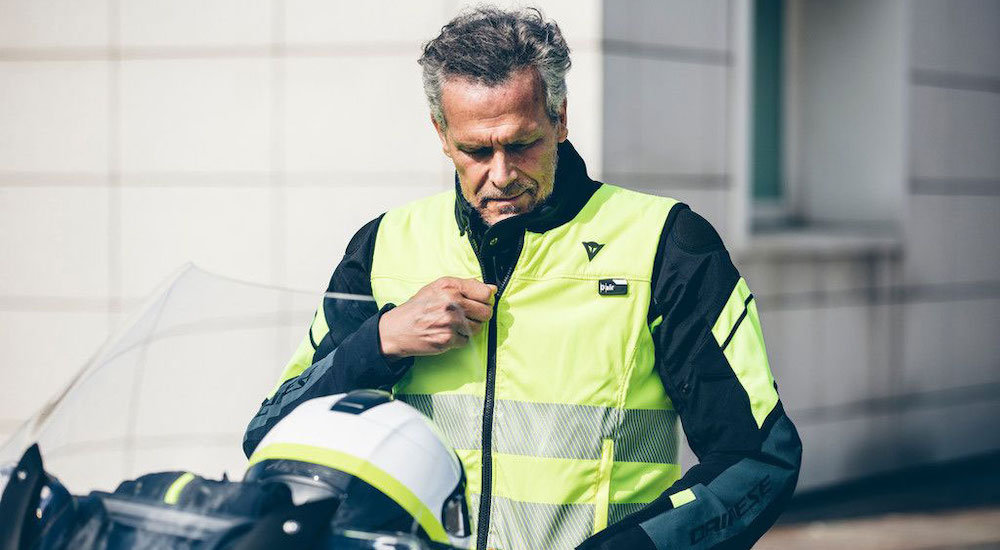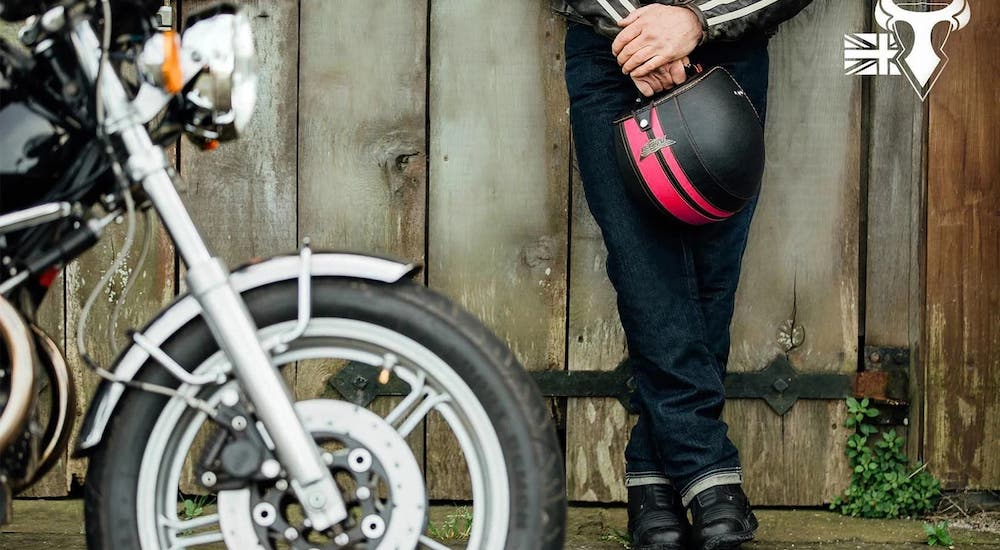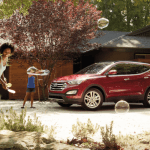A few years ago, my soon-to-be spouse handed me one of his motorcycle jackets and a helmet, saying, “Get ready. Let’s ride.” It was an unforgettable experience as he effortlessly navigated us down hidden backroads with stunning views that painted an intimate portrait of life beyond the hustle of our city and the bustle of our everyday lives. The bike was an extension of him. I fell in love a second time, only this love story was with the freedom of chasing the horizon in the saddle.
That love affair led us to a motorcycle dealership for a helmet because, as I learned, you don’t share helmets. As a rider, my venture into the motorcycle realm taught me the value of a properly fitted helmet and the many accouterments that make riding more comfortable, whether behind the handlebars or in the passenger seat. Of course, there’s a learning curve with every new endeavor, especially when sifting through the ever-growing catalog of riding gear to determine the essentials. How do you determine the difference between what you need and want, what offers the most protection, and what matches your riding and personal style?
Hopefully, I can help lessen the learning curve and offer some insight as you climb into the saddle. From the different types of helmets to eye protection, jackets, gloves, and other basics, here’s a closer look at the necessities and the protection they offer new riders. It’s a list I wish I had when diving into the wild world of riding.
Protect Your Head: Invest in a Properly Fitting Helmet
After my first time on a motorcycle, I became more aware of traffic, inattentive drivers, potentially hazardous conditions, and other riders. This awareness also revealed that not all riders wear helmets. According to the Advocates for Highway and Auto Safety, motorcycle helmets reduce the risk of fatality among riders by 42% and the risk of head injury by 69%. The statistics paint a clearer picture, with the National Highway Traffic Safety Administration estimating that motorcycle helmets saved 1,872 lives in 2017, with 749 additional lives that could’ve been saved if riders had been wearing helmets.
Riders who shy away from wearing helmets often argue that they’re uncomfortable, or limit their visibility. However, advancements in helmet manufacturing prove otherwise, as we see different styles of helmets that offer various levels of protection and comfort. For example, beginners are often encouraged to start with a full-face helmet. It offers the most protection as you hone your skills and learn the ropes of balancing and maintaining control of your bike. As your skills progress, you have plenty of options to explore, from modular helmets to open-face designs that put the wind on your cheeks.
Regardless of the style of the helmet, it’s critical to ensure that it fits correctly and has reputable safety ratings. A motorcycle helmet is designed to protect your head and absorb the impact of a crash should your head make contact with the road or another object. Because of this, a helmet that fits too loose or isn’t buckled can quickly fly off and expose your head. In this situation, it doesn’t matter how high its safety ratings are, because it doesn’t have the opportunity to do its job. A helmet should fit your head snuggly, not shift around as you shake your head, but also not so tightly that it is uncomfortable. You may need to try on helmets by several different manufacturers before finding the one that works best for you.
Protect Your Torso: Find the Right Jacket
There’s a distinct vulnerability when you ride a motorcycle because you’re exposed to the environment, from the wind and rain to the sunshine, as well as the cars that share the road with you (or occasionally don’t). This vulnerability is why having the proper gear is necessary for your protection. While a helmet protects your head, a jacket protects your upper body and torso.
As a new rider, you’re developing your skills and are likely riding a used or entry-level bike that you’ll eventually upgrade for a bigger or more powerful model. Until then, you’ll likely drop your bike a few times until you master the choreography between the clutch, throttle, and brakes. It’s an intimate dance that, when there’s a misstep, can put you on the ground in the blink of an eye. In these instances, a quality motorcycle jacket can protect your upper body from road rash, scrapes, burns, and other injuries.
Ideally, your first motorcycle jacket should be versatile and offer high levels of protection without stifling your maneuverability or comfort. If you live in a hotter climate, look for a protective jacket that features ventilated areas that can keep you comfortable in warmer conditions. Alternatively, if temperatures frequently fluctuate, consider a more versatile, all-season jacket with zippered vents, removable layers, and waterproof elements that let you get the most for your money.
Protect Your Hands: The Perfect Gloves
After a helmet and jacket, the next most important investment is finding a pair of well-fitting gloves. Some riders prefer to ride without gloves, but that means exposing your hands to the elements and putting them at risk for injury should the unthinkable happen. For example, you’re riding along a winding backroad and lose control of the bike. As a new rider, you’re doing your best to apply the brakes but end up laying the bike down, with your hands scraping the concrete as the momentum of your two-wheeled powerhouse slows. It’s painful even to think about, which is why gloves are a must.
Finding the right pair of gloves takes time and requires trying on different styles and fits. The ideal motorcycle glove should be comfortable and allow your hands to move freely. Think about the movement needed to engage the throttle, flash your headlight, or turn on the blinkers. The gloves should also offer some level of weather protection, keeping your hands dry in rainy conditions. If you ride in colder climates and opt for a pair of winter gloves, they should keep your hands warm to enhance dexterity in frigid conditions.
Protect Your Bottom Half: From Pants to Boots
Motorcycle gear has come a long way over the last few decades as manufacturers recognize the demand for apparel that’s protective and stylish. Riders no longer have to compromise their sense of style for peace of mind in the saddle. You’ll experience this firsthand as you look at the different styles of pants and boots that match every riding and style need. Leather pants and industrial-looking riding boots with a dozen eyelets for laces are still prominent, but they’re no longer your only options.
New riders have a plethora of gear to choose from, which makes shopping for gear exciting and fun. Urban riding jeans look like everyday denim, but feature integrated protective panels made of Kevlar, which double as armor and are abrasion-resistant. Women also have plenty of options, from jeggings and leggings with Kevlar panels to traditional denim and leather pants.
As far as boots, the sky is the limit. While you can get away with wearing a close-toed shoe, like a hiking boot or a steel-toed work boot, there are many advantages to investing in a high-quality riding shoe. These shoes feature more durable soles and offer more protection for your toes and ankles. Most notably, this protection is no longer limited to the traditional boot. Instead, riding shoes come in dozens of styles, from high-tops to tennis shoes with zippered sides that make them easy to take on and off.
Invest in Your Ride
One of the wisest investments you can make as a new motorcycle rider is to prioritize your safety. Outfitting yourself with high-quality gear that fits properly is the first step to gaining confidence in the saddle and building your skills. Donning the essentials, like a helmet, jacket, gloves, and pants, offers a protective shield of armor that makes you slightly less vulnerable to the elements and gives you the freedom to chase the horizon and explore your new pastime.






